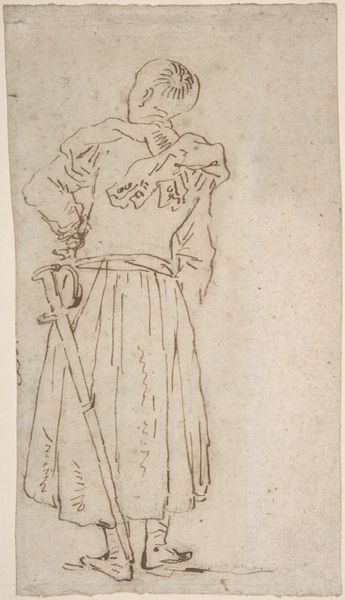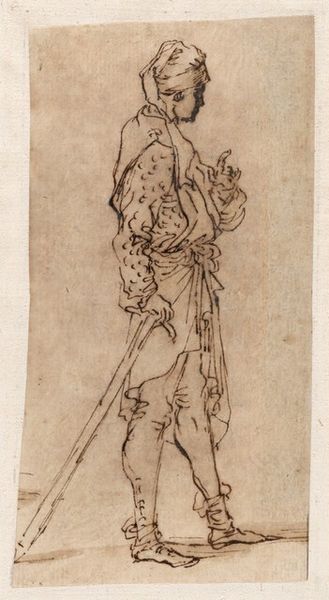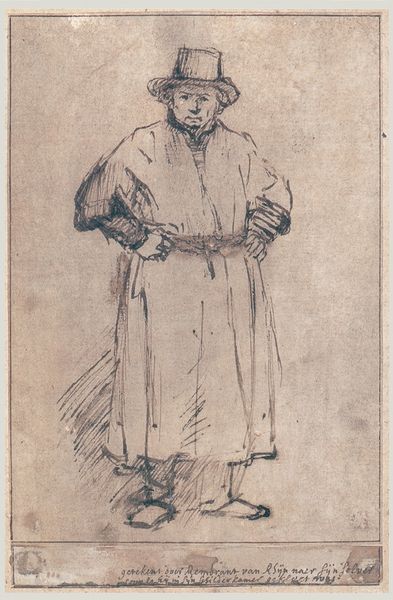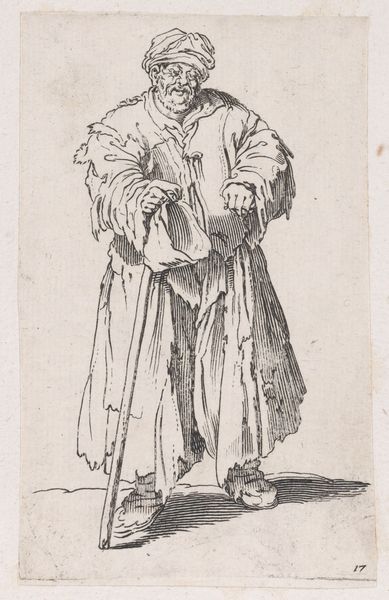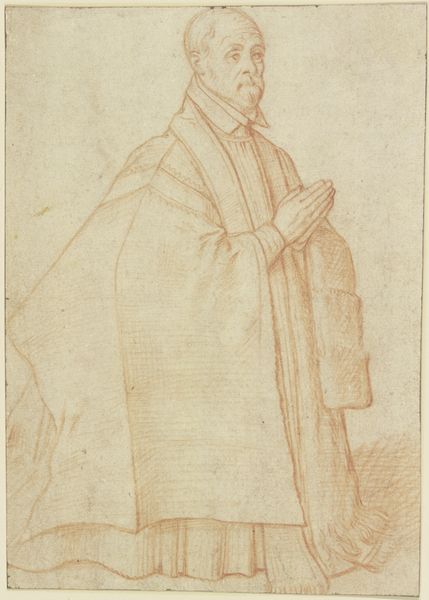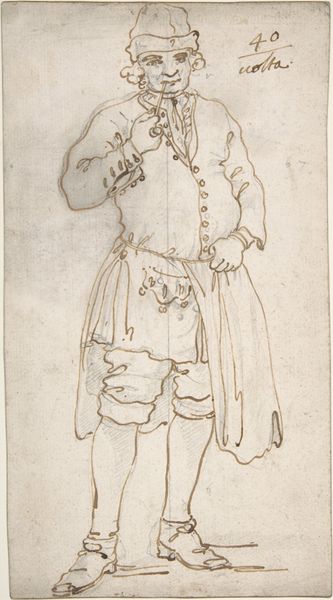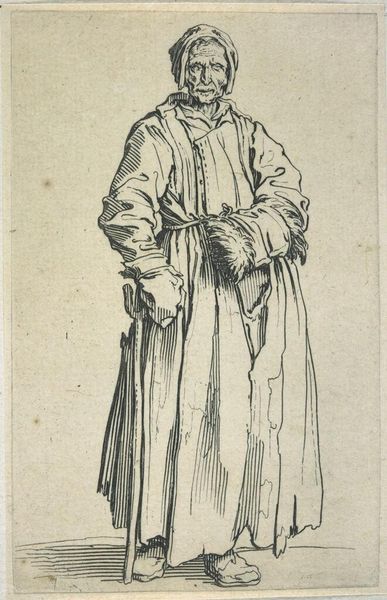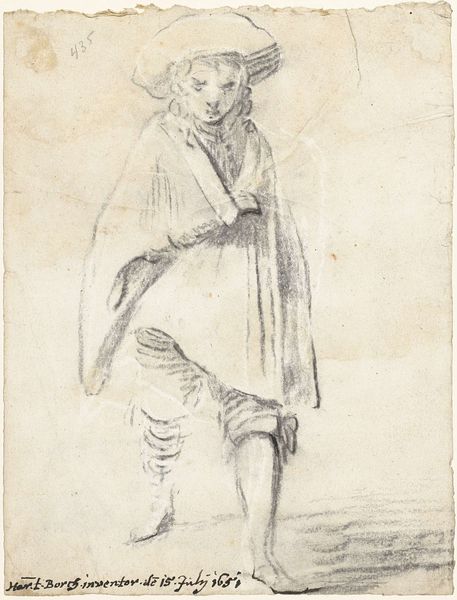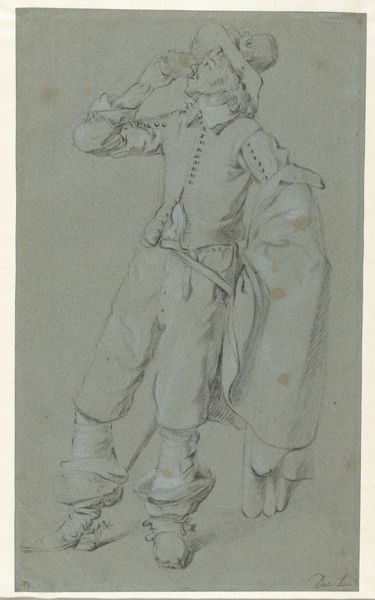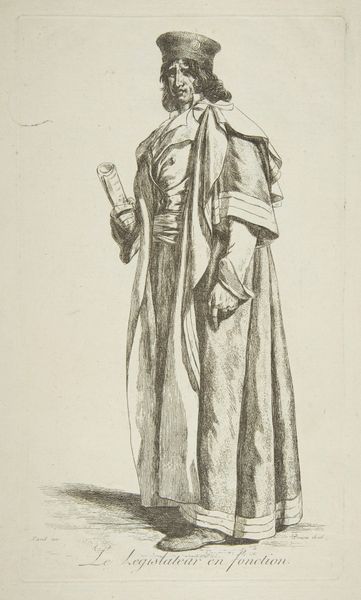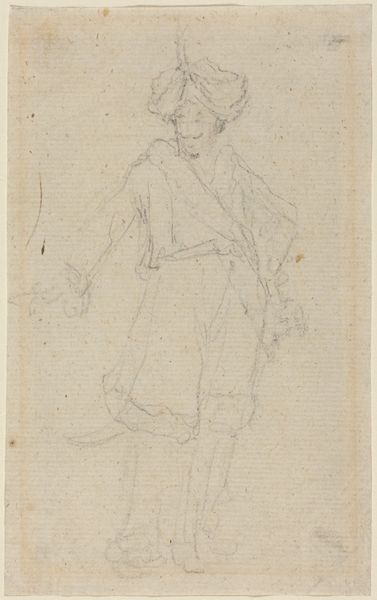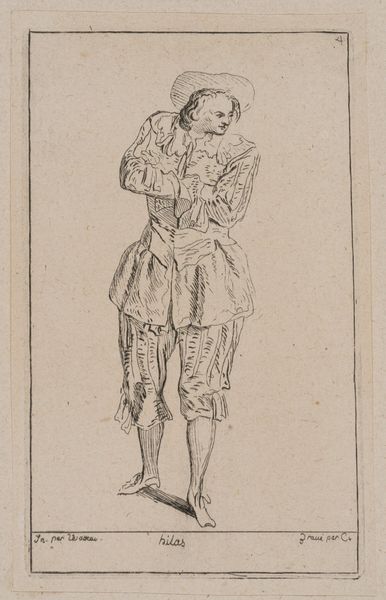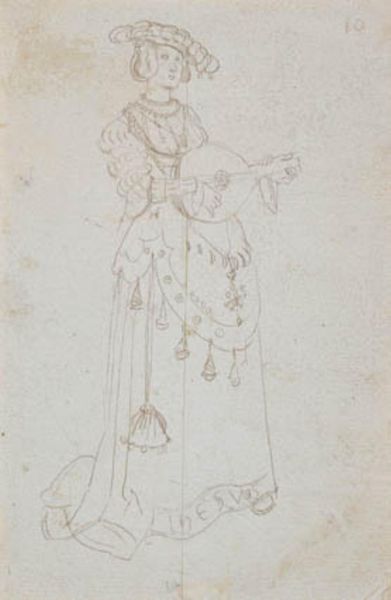
drawing, print, ink, pen
#
portrait
#
drawing
#
baroque
# print
#
pencil sketch
#
figuration
#
ink
#
orientalism
#
pen
#
genre-painting
Dimensions: 7-11/16 x 4-1/2 in. (19.5 x 11.4 cm)
Copyright: Public Domain
Curator: What strikes me immediately is the commanding presence in this simple ink drawing. There's a certain defiance in the way this man stands, hand on his hip. Editor: And it makes me think about Orientalism in art history. This is "Man in a Long Coat and Turban with a Sword," dating from sometime between 1700 and 1800. The artist is anonymous. It’s part of the collection at the Met. Curator: Yes, the piece, though technically adept, also engages with themes of power and otherness. I wonder about the historical context: what socio-political dynamics shaped its creation? Who was the audience? The exoticization is clear. What does that say about cultural hierarchies of the period? Editor: For me, the most compelling symbol is the turban. It's so ornate and prominent, clearly intended to signify something. Think about its cultural meaning. Turbans are not merely head coverings. They denote identity, status, even spiritual affiliation within specific communities. The artist, by placing it so centrally, draws attention to the man's identity as 'other.' Curator: But do you think it essentializes the figure? He's an individual, not just a symbol. I can't help but read the defiance in his stance. Perhaps this is less about outright exoticization and more about… confrontation? Maybe a challenge to Western power? Or is that wishful thinking? Editor: That defiant posture you see might actually reinforce established tropes of ‘Eastern’ pride or arrogance in the eyes of its original viewers. Symbols are rarely straightforward. They gain new meaning depending on cultural perspectives, the viewers' social contexts, even individual biases. Curator: So we agree that there’s interplay here between cultural understanding and personal interpretation, mediated by the artist's own biases, and those of the culture he existed within. It opens an interesting dialogue about how we, as viewers, bring our own preconceived notions to the experience. Editor: Indeed, looking closer helps decode embedded social histories of the past and how we deal with it today. This piece offers valuable, visual clues.
Comments
No comments
Be the first to comment and join the conversation on the ultimate creative platform.

